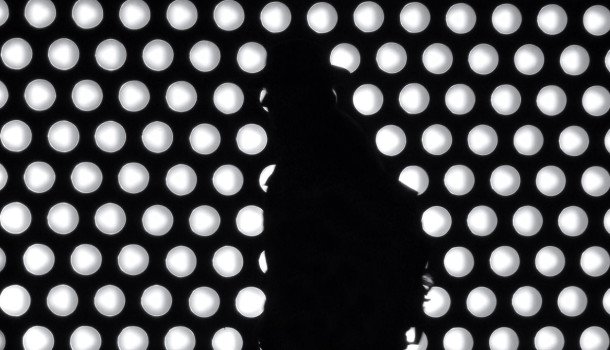Da Vinci’s belief that “everything connects” helped make him the 15th-century Italian Renaissance man we all admire today. And it was another legendary thinker who noted that “the past is prologue.” Connect the dots to create a pretty picture for you and your business.
BY FAISAL HOQUE
Da Vinci’s belief that “everything connects” helped make him the 15th-century Italian Renaissance man we all admire today. And it was another legendary thinker who noted that “the past is prologue.” Connect the dots to create a pretty picture for you and your business.
In recent years, Leonardo da Vinci has attracted a lot of fresh press with the popularity of Dan Brown’s book, The Da Vinci Code. And now with a new TV series from David Goyer Da Vinci’s Demons on Starz, Da Vinci’s stature is perhaps at an all-time high.
The Boston Globe writes, “In the buoyant new historical fantasy series ‘Da Vinci’s Demons,’ Leonardo da Vinci might as well be the guy who invented the latest, greatest social media app. He’s a technological geek with strong people skills and an ability to market his concepts.”
I got hooked into the series right from the very beginning. The series shows how Da Vinci manifests the future with his ability to repeatedly visualize and then architect his innovative future. It was Da Vinci’s observation and belief that “everything connects” that made him the 15th-century Italian Renaissance man that we all admire today.
I call this ability to connect “the CONVERGENCE“–bringing art, science, and spirituality together. And making connections between disparate things is perhaps the number one skill needed for creative thinking.
The ritualistic practice of thinking about how different things relate to each other, and how different things could be combined to make something completely different results in sustainable innovation. And it applies to our lives and professions equally, no matter what we do.
The Power of Visualization
Author Harvey Mackay, in his blog Power of Visualization Helps You Achieve Goals writes: “To have an idea or dream, and then to see how you can make it happen, helps shape your plans and defines your goals more clearly.” Mackay highlights that Nobel Laureate Jonas Salk was asked how he went about inventing the polio vaccine. His reply? “I pictured myself as a virus or a cancer cell and tried to sense what it would be like.”
For the most part, my life (sure, it has been full of ups and downs just like millions of other people’s) is an absolute result of how I visualized my steps forward. Manifestation of a reality perhaps begins with a vision, faith, and a certain amount of luck along the way.
But the ability to visualize the details of how disparate elements connect with each other makes a significant difference. To visualize, it requires us to be deeply “awake” along with having the how-to knowledge for the implementation of our plan. People who succeed constantly visualize and re-envision the steps of how to push forward regardless of a situation.
Take a look at the following clip from Da Vinci’s Demons, where (even though it’s a fantasy) the art and science of visualization is masterfully captured:
The Practice of Visualization
In the psychology community, creative visualization refers to the practice of seeking to affect the outer world by changing one’s thoughts and expectations. It is practiced extensively in the professional sports community.
Dr. William Fezler, in his book Creative Imagery: How to Visualize in All Five Senses suggests creating a detailed schema of what one desires and then visualizing it over and over again with all of the senses (i.e., what do you see? what do you feel? what do you hear? what does it smell like?).
Visualization practices are also common in many Eastern spiritual exercises. In Vajrayana Buddhism, complex visualizations are used to attain nirvana. Hindu Monistic theory makes similar arguments as Dr. Fezler. Robert Redford’s movie The Legend of Bagger Vance is full of Hindu mysticism of practicing mental visualization. The movie was based on the 1995 book of the same title by Steven Pressfieldand is about a golfer in Georgia.
“See the place where the tides, and the seasons … the turning of the earth all come together; where everything that is becomes one. You’ve got to seek that place, with your soul, Junuh. Seek it with your hands, don’t think about it, feel it. Your hands are wiser than your head’s ever gonna be. I can’t take you there … I just hope I can help you find a way.” ~ Bagger Vance,
Successful people like Oprah Winfrey, Bill Gates (who is a big Da Vinci fan, incidentally), and Will Smith all claim to practice visualization. Actor Jim Carrey says that he wrote a check to himself in 1987 in the sum of $10 million. He dated it “Thanksgiving 1995” and added the notation: “for acting services rendered.” He visualized it for years and in 1994 he received $10 million for his role in the movie Dumb and Dumber.
Okay, but most of us are neither sages nor celebrities, so how do we practice visualization?
As an entrepreneur, author, technologist, and a dreamer, I have taught myself three basic things in the hopes of manifesting my own future:
I imagine myself in the final stage (of my goals, my products, my companies, my personal life, etc.).
I study patterns (of my surroundings, my markets, my skills, my behaviors, my reactions, my mistakes, etc.).
I practice rituals (to be disciplined about my devotion, to recover from my defeats, to thrive, to achieve a higher degree of confidence, etc.).
Visualization is perhaps one of the many attributes that assures one’s future. But I have come to believe it is certainly a critical factor.
Who was Da Vinci Really?
Da Vinci’s Demons is, of course, a television fantasy, but it effectively portrays his thinking process. If you want to know the real Da Vinci and all his ups and down, check out the following BBC program: Leonardo da Vinci: The Man Who Wanted to Know Everything.
Read the original article @FastCompany.












